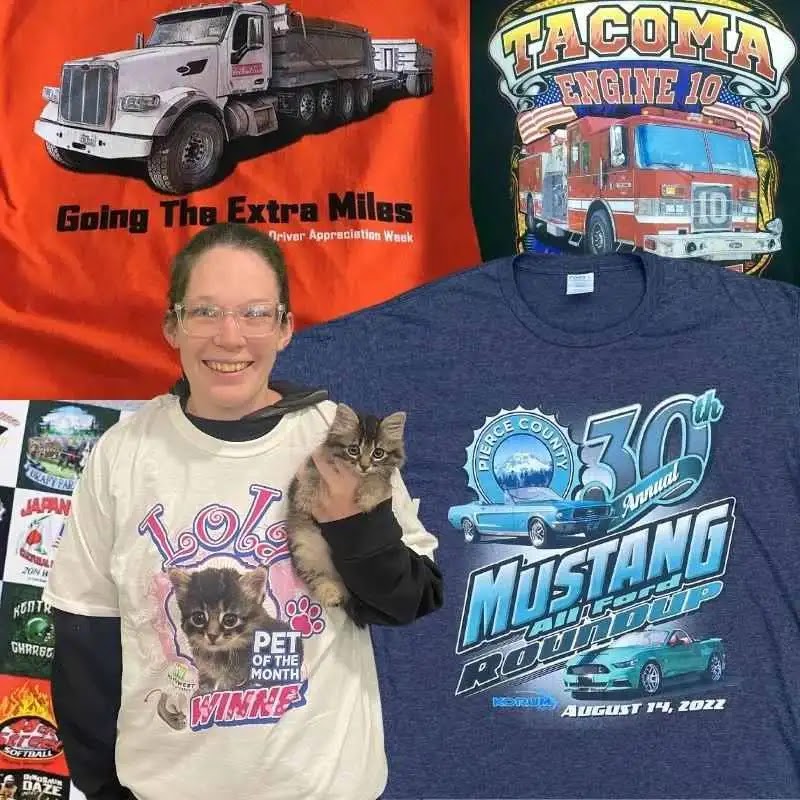Embracing Customization: The Rise of DTG Printing
In the ever-evolving landscape of garment printing, Direct-to-Garment (DTG) printing has emerged as a game-changer. Traditional printing methods often posed limitations when it came to small-batch or personalized orders. However, with the advent of computerized processes, the DTG technology has transformed the industry, enabling the seamless production of quantities ranging from a single piece to a hundred T-shirts with unprecedented ease and efficiency.
Understanding DTG Printing
DTG printing involves the use of specialized inkjet technology to apply detailed designs directly onto garments. Unlike traditional methods like screen printing, which can be cost-prohibitive for smaller runs, DTG Printing doesn't require intricate setups or separate screens for each design. Instead, it operates akin to a regular inkjet printer but on fabric.
The beauty of DTG lies in its adaptability. It can effortlessly accommodate variable designs, intricate details, and vibrant colors with remarkable precision. This versatility makes it an ideal choice for personalized apparel, limited edition runs, or on-demand printing.
Flexibility Redefined: Quantities of One to 100
One of the most striking advantages of computerized DTG printing is its ability to cater to quantities previously considered impractical. Historically, producing a single customized T-shirt was a cumbersome and expensive process, deterring many from pursuing their creative visions. However, with DTG, these barriers have been shattered.
Whether you're an individual looking to print a unique shirt or a small business seeking a limited batch of merchandise, DTG offers unparalleled flexibility. From commemorating special events with individualized tees to crafting small collections for niche audiences, the technology allows for swift, cost-effective production without compromising on quality.
The Role of Automation and Precision
At the heart of this revolution lies automation. Computerized processes have streamlined the printing workflow, significantly reducing manual intervention. From preparing designs digitally to the actual printing process, every step is meticulously controlled, ensuring consistent and high-quality results across each piece.
Moreover, the precision afforded by DTG technology is a boon for intricate designs. Fine details, gradients, and vibrant color schemes are faithfully replicated on garments, mirroring the original artwork with stunning accuracy. This level of detail preservation was previously unattainable in small-batch printing, marking a paradigm shift in the industry's capabilities.
Sustainability and Cost-Efficiency
Beyond its agility and precision, embroidery vs dtg printing aligns with sustainability efforts in the fashion industry. Unlike traditional methods that often generate substantial waste through excess ink, screens, and setup materials, DTG minimizes these environmental impacts. It operates on a "print-on-demand" model, reducing overproduction and unnecessary inventory.
Additionally, the cost-effectiveness of DTG for small quantities cannot be overstated. Eliminating the need for bulk orders, setup fees, and storage costs associated with traditional methods, DTG empowers individuals and businesses to produce only what they need, when they need it, optimizing resources and budgets.
Conclusion
The shift towards computerized processes in DTG printing has democratized garment customization and small-batch production. From catering to individual preferences to facilitating small-scale businesses, this technology has paved the way for creativity without constraints.
With its ability to handle quantities from one to a hundred with equal efficiency and precision, DTG printing represents Nw Custom apparel not just a technological advancement, but a catalyst for innovation and accessibility in the world of garment decoration. Embracing this evolution unlocks a realm of possibilities, empowering creators and businesses to bring their unique visions to life, one personalized T-shirt at a time.

Comments
Post a Comment